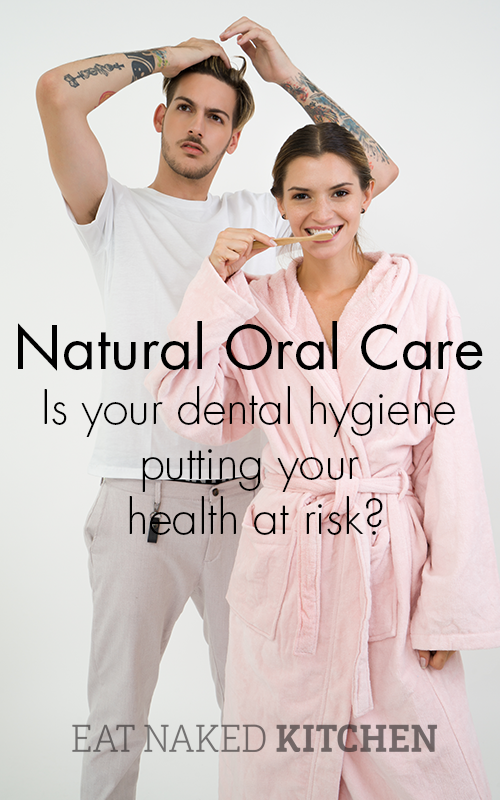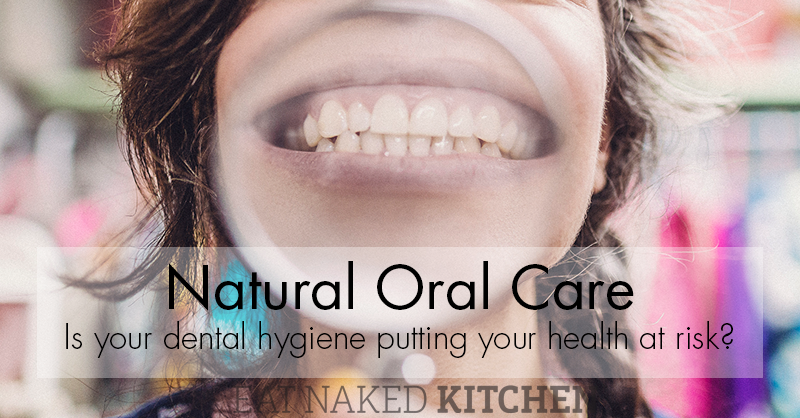I have a confession to make: until this spring, I hadn’t been to the dentist in 15 years. Yup, that’s not a typo. 15 years!
I know that’s odd for someone who values and prioritizes her health in every other way. I don’t know how to explain it… I’d never had dental issues, and when I moved to the US in 2005, I just never got around to finding a dentist. And when one year crept into two which crept into five, it became a “thing” and like a lot of “things”, it became a thing I couldn’t actually move through.
And then, a dear friend and colleague who happens to have a former life as a dental hygienist, learned about this lack of dental supervision in my life and gave me a firm talking to. So with my tail sheepishly between my legs, I found a local dentist and reluctantly made an appointment.
I was straight up scared to go. Not only had I not been to the dentist in 15 years, I also had been using a natural regime for dental care, and I was terrified that I was going to be handed proof that my it wasn’t enough.
Nevertheless, I put on my brave face, flossed for the third time that morning, and headed in to learn of my fate.
I wanted the truth out as quickly as possible so my first words after “hello” were “I’ve not been to a dentist in 15 years.” He looked at me with a flat expression and raised eyebrows and said, “Well, let’s see what we’ve got then.” This didn’t bode well.
We started with Xrays. I’m no dental technician but what I was seeing on the screen looked pretty darned good to me. And as he zoomed in and out of the various views, he muttered “How about that – they’re looking good…”
Then we moved on to the plaque-scraping and I braced myself for some torture, but amazingly, he was barely doing anything at all.
This is when the questions started coming.
“Tell me again how long it’s been?”
“Clearly you floss – how many times a day?”
“What toothpaste do you use?”
“Wait, can you say that brand again? I’ve never heard of it…”
And that’s when I realized that not only did I not have a mouthful of cavities, I was actually impressing and amazing him with the fabulous health of my teeth and mouth.
As I thanked him and said goodbye, I left him googling the different toothpastes I told him about. I’m not sure if he saw my happy dance as the door closed behind me.
Just as important as the food we eat is what we put on our teeth.
Finding a natural, but effective toothpaste can be a challenge. Most conventional toothpastes contain ingredients that can harm your health. While you may not be swallowing toothpaste, the toxins in toothpaste enter your body through the lining of your mouth and go directly into your bloodstream. Ever taken a supplement or medication that you take under the tongue? The reason they do that is that it absorbs so quickly into your blood. So it’s a given that anything you’re putting in your mouth – especially anything you’re holding there and swishing around like toothpaste and mouthwash -is going to have free access to the bloodstream.
Considering we use about 20 gallons of toothpaste in our lifetime, it follows that the ingredients in your toothpaste should matter just as much as the ingredients in your food.
Here’s a list of the most common ingredients in most conventional (and some natural) toothpastes:
- Fluoride – While more research is needed, there are studies showing that high concentrations of fluoride in pregnant women can affect their child’s IQ negatively. This wouldn’t necessarily be an issue if the only source of fluoride you and you child got was from toothpaste. Many cities fluoridate their water so you and your kids are also getting it there. Here’s the study. To see if your city water is fluoridated, use this guide (Note: this is a CDC resource which advocates fluoride in water).
- Saccharin – a petroleum-based, lab produced sugar substitute. Need we say more?
- Aspartame – an artificial sweetener known to metabolize inside your body as both a poisonous wood alcohol and formaldehyde.
- Parabens- a type of preservative with lots of different names. These chemicals mimic the hormone estrogen and can potentially cause cancer, developmental, and reproductive issues.
- Sodium Lauryl Sulfate and Sodium Laureth Sulfate – these detergents make your toothpaste foam, but may also cause canker sores, mouth ulcers, stomach issues, and cancer.
- Propylene Glycol – a mineral oil that may cause cancer, reproductive issues, and skin irritation.
There are many studies regarding these ingredients, among others, and how they affect your body. But unfortunately for every study that shares the harmful effects, there’s another saying it’s just fine. How to navigate this confusing territory?
In our household, we go with the natural, transparent choices.
But I’ve gotta tell you, it’s taken us some time to figure out the ones that really work. Not all natural products are created equally, and frankly some just don’t do the trick. We’ve been doing this work for a long time, and as a result, have done a lot of trial and error. We’ve tried many of the natural toothpastes available and have found that in some cases, our mouth just doesn’t feel as clean as when we use conventional toothpaste.
Below are our top picks for natural toothpastes that actually work. In fact, our best strategy is to rotate between two or three of these at a time. This way you’re capitalizing on the strengths of each individual product and getting more diverse benefit.
Our top picks for natural toothpastes that actually work
Jason toothpaste, specifically the Sea Fresh brand is a standard, good and natural toothpaste. It doesn’t include any of the ingredients listed above, provides a good clean and a lasting flavor.
Hello is an activated charcoal brand that is MESSY (spit carefully) but leaves a great minty clean. Activated charcoal has been used as far back as Ancient Roman to help keep teeth clean and is known as a natural whitening agent. Activated charcoal on its own is abrasive and can damage enamel. In this gentler toothpaste form you should see brighter teeth without the loss of enamel. However, to be safe, this is not a toothpaste we use daily.
and lastly, our new favorite:
Dentalcidin by Bio-Botanical Research. Dentalcidin doesn’t taste like most natural toothpastes. It’s not overly strong nor foul. It’s got a pleasant taste from an essential oil blend (spearmint, peppermint, tea tree, cinnamon, and clove bud). The magic ingredient is the biocidin blend of botanicals. Think of this like a natural antibiotic that effectively heals gum inflammation, removing biofilms and plaque. I attribute the lack of scraping at the dentists to this product specifically. Since incorporating it into our routine, I’ve noticed my teeth feeling cleaner, there’s less plaque build up, and I have better breath. While this toothpaste is expensive, it’s an ideal toothpaste for anyone with oral inflammation or infections. You can stretch out the use of more expensive toothpastes by rotating in the less expensive brands.
Now of course, toothpaste isn’t everything. You need to be eating well to avoid tooth and mouth issues. That means limiting sugar and starches in your diet, eating plenty of nutrient-dense foods, and optimizing digestive health to ensure you’re properly absorbing the key nutrients that go into building teeth from your diet. But the idea that you need to have fluoridation (we live in Portland where there is no fluoride in our water) or other chemicals to keep your teeth clean and healthy just isn’t true.
Dentalcidin isn’t available in your common store, but we do sell it here. I’ve had great results with other Bio-Botanical Research products and uses many of them with my clients.
While there are many recipes out there for making your own toothpaste with baking soda (we’ve done this), Dentalcidin is a one of a kind product that must be purchased to experience.
Let us know what toothpaste you use and what you like about it in the comments below!






